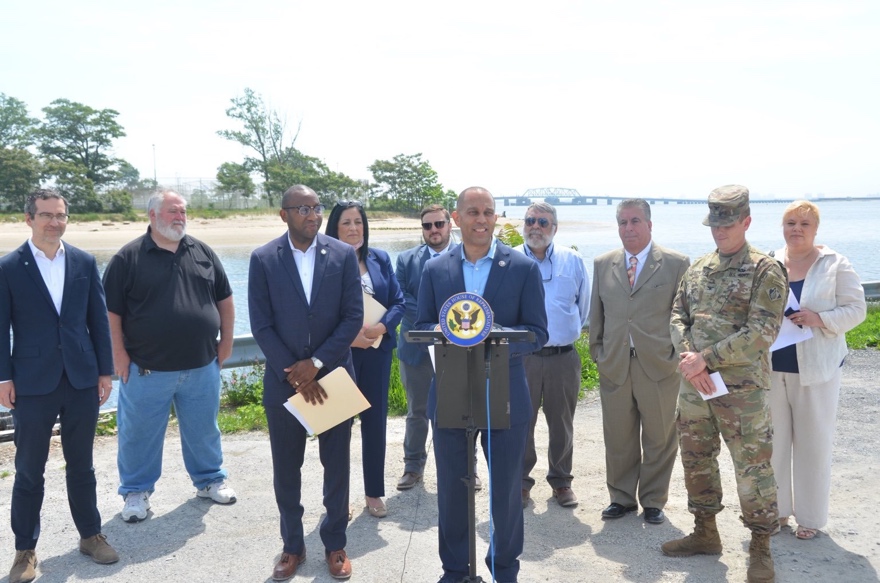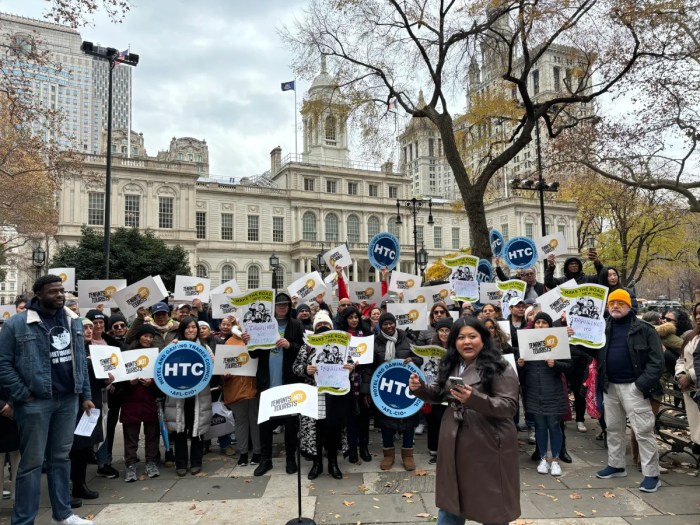With the Atlantic Hurricane Season underway, Congressman Hakeem Jeffries joined community leaders in Howard Beach to announce that the Biden administration provided the necessary funding for a feasibility study for ecosystem restoration and hurricane and storm damage risk reduction for Spring Creek and Howard Beach.
“The Howard Beach community faces flooding during both minor and major storms. Compounding the risk of flooding, the area is highly degraded with invasive plant species that pose a fire risk,” Jeffries said. “Like all of New York, Howard Beach is resilient, but we owe it to them to do better and to address the issues at the core of the matter. So I am very pleased that after working closely with the Army Corps of Engineers, the Biden administration has provided $500,000 for this resiliency project. With this funding, we take the first step in ensuring that the shoreline neighborhoods in Queens have the resources needed to investigate ecological and coastal storm risk management measures.”
The project represents the first phase of a resiliency project in Queens with the funding past of the 2022 budget.
“Nearly a decade later, Queens is still reeling from Superstorm Sandy’s aftermath, and we still need as much support as possible,” Queens Borough President Donovan Richards said. “Congressman Jeffries’ funding will bring much-needed relief to Spring Creek South and Howard Beach, and I thank the congressman for allocating these funds to our communities. Together, we can work to ensure our borough recovers.”
Howard Beach and low-lying communities around Jamaica Bay and the Rockaways were devastated when the storm slammed into southern Queens in 2012. Large portions of the city were severely impacted and Sandy killed more than 280 people in the Northeast. It caused more than $70 billion in damage, making it one of the costliest natural disasters in United States history.
“The funding secured towards expediting the feasibility study for ecosystem restoration and hurricane and storm damage risk reduction for Spring Creek South and Howard Beach in the Biden administration’s budget is incredible and much welcomed news,” Assemblywoman Stacey Pheffer Amato said. “Every hurricane season increases the odds of a disaster. We need these resiliency measures as soon as possible, and this is the very first step on the path to resiliency. I want to thank Congressman Jeffries for his leadership, and for fiercely advocating for our community.”
The group assembled on the edge of Jamaica Bay on Cross Bay Boulevard that was virtually submerged when Sandy pushed a 10-foot storm surge into the neighborhood.
“Virtually every home in a two-plus-square-mile area of Community District 10 was inundated by tidal flood waters, and every family in this low-lying New York City coastal community of mostly one- and two-family homes were negatively impacted,” Community Board 10 Chair Betty Braton said. “The funding Congressman Jeffries secured for this study will be another step forward toward accomplishing an infrastructure system of critically needed resiliency projects that protect both our Howard Beach homes and provides for a sustainable ecosystem along the coastline here.”
The study will build on work that has already been completed to provide timely and well-considered recommendations for providing ecological benefits and reducing the risk of storm damage.
“The Spring Creek South project will protect the southwestern portion of Howard Beach; however, the rest of our community still remains vulnerable,” New Hamilton Beach Civic Association President Roger Gendron said. “The new feasibility study in unique in the sense that it would be based on all of the information gathered by the multitude of precious studies that have been conducted in the hope that it would take substantially less time to see the results. If we go back to the studies from the 1960s then, for our community, the only real solution towards storm risk reductions is the installment of tide gates, storm barriers and interior drainage in and around Hawtree and Shellbank Basins. Once these things are in place, the homes that we live in, the businesses we shop in, and the houses we worship in will not be flooded again.”




































